Transform Your Outdoor Space: Landscape Gardening in Archway
Introduction to Landscape Gardening in Archway
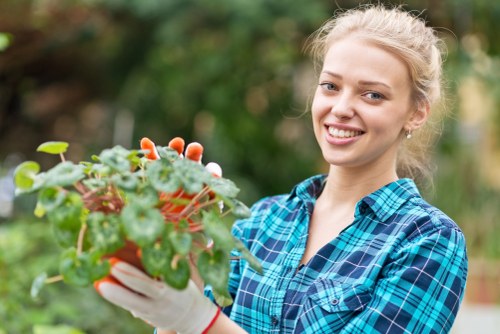
Landscape gardening in Archway offers a unique blend of natural beauty and urban convenience. Nestled in the heart of London, Archway presents gardeners with a diverse range of flora and landscaping opportunities. Whether you're looking to create a tranquil retreat or a vibrant garden space, Archway's environment caters to all gardening aspirations.
The local climate in Archway is conducive to a variety of plants, from hardy perennials to delicate shrubs. Understanding the specific conditions of Archway, including soil type and sunlight exposure, is essential for successful landscape gardening. This article will guide you through the key aspects of creating and maintaining a beautiful garden in Archway.
Embracing sustainable gardening practices not only enhances the beauty of your outdoor space but also contributes to the overall health of the environment. By choosing native plants and implementing eco-friendly techniques, landscape gardening in Archway can be both aesthetically pleasing and environmentally responsible.
Planning Your Landscape Garden
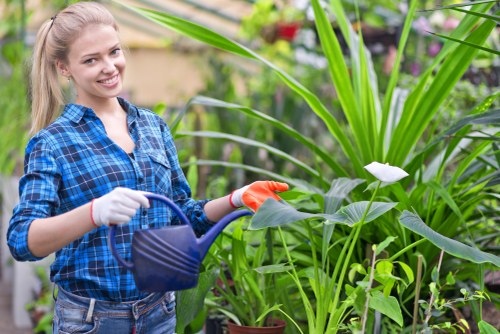
Effective landscape gardening begins with meticulous planning. Start by assessing the available space in your Archway garden, taking note of existing structures, vegetation, and topography. Create a layout that maximizes the potential of your garden, ensuring that each area serves a specific purpose, whether it's for relaxation, entertainment, or cultivation.
Consider the style you wish to achieve. From traditional English gardens to modern minimalist designs, Archway offers the flexibility to tailor your garden to your personal taste. Incorporating elements like pathways, water features, and seating areas can add both functionality and charm to your landscape.
Budgeting is another critical aspect of planning. Outline the costs associated with materials, plants, and any professional services you might require. A well-thought-out budget ensures that your landscape gardening project remains financially feasible and aligns with your long-term vision.
Choosing the Right Plants for Archway
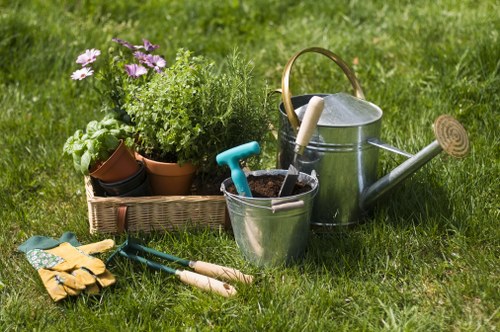
Selecting the appropriate plants is paramount for a thriving landscape garden in Archway. Opt for a mix of evergreen and seasonal plants to ensure year-round interest. Native plants are particularly advantageous as they are well-adapted to the local climate and require less maintenance.
Perennials such as lavender, hostas, and daylilies provide color and texture throughout the seasons. Incorporating a variety of plant heights and foliage types can create depth and visual appeal. Additionally, flowering shrubs and trees can serve as focal points, enhancing the overall structure of your garden.
Don't overlook the importance of proper plant placement. Group plants with similar water and sunlight needs together to simplify maintenance and promote healthier growth. Utilizing raised beds or container gardening can also optimize space and improve plant health by offering better drainage and soil conditions.
Soil Preparation and Maintenance
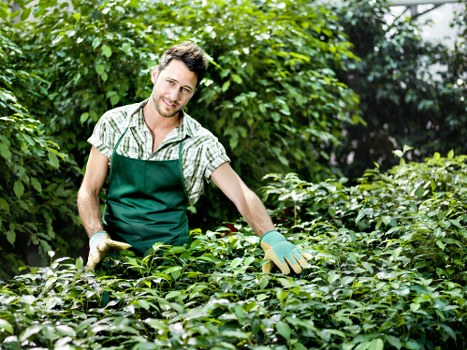
Healthy soil is the foundation of successful landscape gardening. Start by testing your soil to determine its pH level and nutrient content. In Archway, the soil typically has good drainage, but adding organic matter like compost can enhance fertility and structure.
Implementing a regular maintenance schedule is essential. This includes watering, weeding, pruning, and fertilizing. Mulching helps retain moisture, suppress weeds, and regulate soil temperature. Investing in quality tools and establishing a routine will make garden upkeep more manageable and effective.
Pest and disease management should also be a priority. Utilize integrated pest management (IPM) techniques to control unwanted pests while minimizing the use of chemicals. Regularly inspecting your plants can help identify issues early, allowing for prompt and targeted interventions.
Incorporating Sustainable Practices
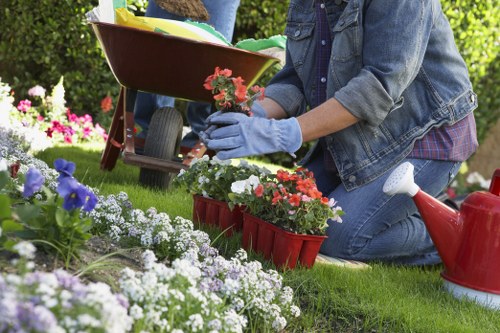
Sustainability in landscape gardening is increasingly important. In Archway, adopting eco-friendly practices can lead to a more resilient and vibrant garden. Start by conserving water through rainwater harvesting systems and drip irrigation. These methods reduce water waste and ensure plants receive adequate hydration.
Composting is another sustainable practice that enriches soil health. By recycling kitchen scraps and garden waste, you create a nutrient-rich amendment that supports plant growth. Additionally, choosing recycled or locally sourced materials for garden structures and paths minimizes your environmental footprint.
Encouraging biodiversity by attracting pollinators and beneficial insects can naturally control pests and enhance garden productivity. Planting a variety of species provides habitat and food sources, contributing to a balanced and thriving ecosystem.
Enhancing Garden Aesthetics
Design Elements

Incorporating design elements such as pathways, water features, and lighting can significantly enhance the aesthetics of your landscape garden. Stone or gravel pathways guide visitors through your garden, creating a sense of journey and discovery.
Water features like fountains, ponds, or waterfalls add a soothing auditory dimension and serve as focal points. Proper lighting not only extends the usability of your garden into the evening but also highlights key features and ensures safety.
Color and Texture
Utilize a harmonious color palette to create visual cohesion. Complementary colors can make certain plants stand out, while analogous colors provide a more subtle and unified look. Mixing different textures through varied foliage and plant forms adds depth and interest.
Seasonal color variations keep your garden vibrant all year round. Incorporate spring blooms, summer lushness, autumn hues, and winter structure to maintain continuous appeal.
Pruning and Trimming Techniques

Regular pruning and trimming are essential for maintaining the health and appearance of your landscape garden. Pruning helps remove dead or diseased branches, promotes air circulation, and encourages new growth. It's important to understand the specific needs of each plant to avoid improper cutting.
For ornamental trees and shrubs, shaping can enhance their structural integrity and ornamental value. Tools such as pruning shears, loppers, and saws are indispensable for effective maintenance. Always ensure your tools are clean and sharp to prevent plant damage and disease spread.
Timing is also crucial. Different plants have specific pruning seasons that maximize their growth and flowering potential. For instance, many flowering shrubs are best pruned after their blooming period to avoid cutting off next year's flower buds.
Seasonal Gardening Tips

Adapting your gardening practices to the seasons ensures your landscape garden remains healthy and attractive throughout the year.
Spring
Spring is the ideal time for planting new flowers and vegetables. Prepare your soil by adding compost and mulch to support new growth. Prune any dead branches from trees and shrubs to promote healthy blooming.
Summer
During the summer months, focus on watering and weeding to keep your garden thriving. Install shade cloths or provide natural shading to protect delicate plants from excessive heat.
Autumn
Autumn is perfect for planting bulbs that will bloom in the spring. Clean up fallen leaves and debris to prevent pests and diseases. Apply mulch to insulate plant roots during the colder months.
Winter
In winter, protect sensitive plants from frost by using coverings or relocating potted plants indoors. This is also a great time to plan for next year's garden and perform any necessary repairs to garden structures.
Choosing the Right Tools and Equipment

Having the right tools is essential for efficient landscape gardening. Invest in quality gardening tools such as spades, rakes, shears, and hoes. Ergonomic designs can reduce strain and increase productivity.
Equipment maintenance is equally important. Regularly clean and sharpen your tools to ensure they remain effective and long-lasting. Storing tools properly also prevents rust and wear, extending their usability.
For larger projects, consider investing in power tools like lawn mowers, tillers, and chainsaws. These tools can save time and effort, especially in expansive gardens requiring substantial maintenance.
Hiring Professional Landscape Gardeners in Archway

While DIY landscape gardening is rewarding, hiring professionals can bring expertise and efficiency to your project. Professional landscape gardeners in Archway are familiar with local plant species, soil conditions, and climate patterns, ensuring optimal garden health and aesthetics.
Experienced gardeners can help design a layout that suits your space and meets your preferences. They can also handle complex tasks like irrigation system installation, soil testing, and pest management with precision and care.
Consulting with professionals can also save time and reduce the stress associated with large gardening projects. Their insight and skills can transform your outdoor space into a stunning landscape that you can enjoy for years to come.
Conclusion: Embrace the Beauty of Landscape Gardening in Archway

Landscape gardening in Archway is an enriching endeavor that combines creativity, sustainability, and functionality. By carefully planning your garden, selecting the right plants, and maintaining your space, you can create a beautiful outdoor environment that reflects your personal style and enhances your quality of life.
Embrace sustainable practices to ensure your garden thrives while contributing to the well-being of the environment. Whether you choose to undertake the project yourself or enlist the help of professional gardeners, the rewards of a well-tended landscape are immeasurable.
Ready to transform your outdoor space? Contact us today to start your landscape gardening journey in Archway and cultivate a garden that you and your community will cherish.